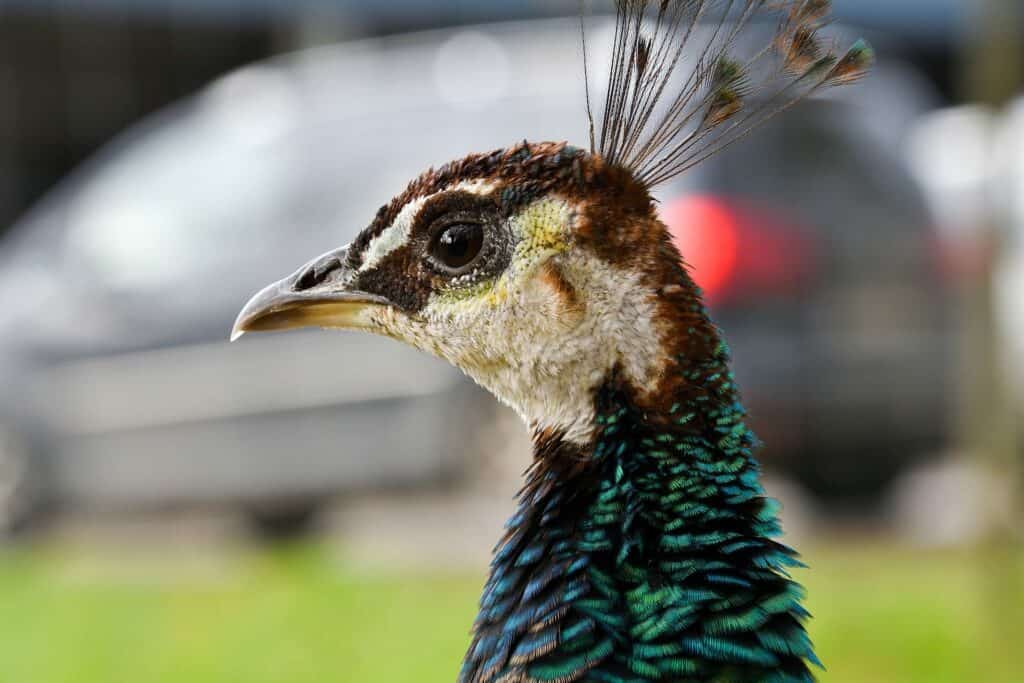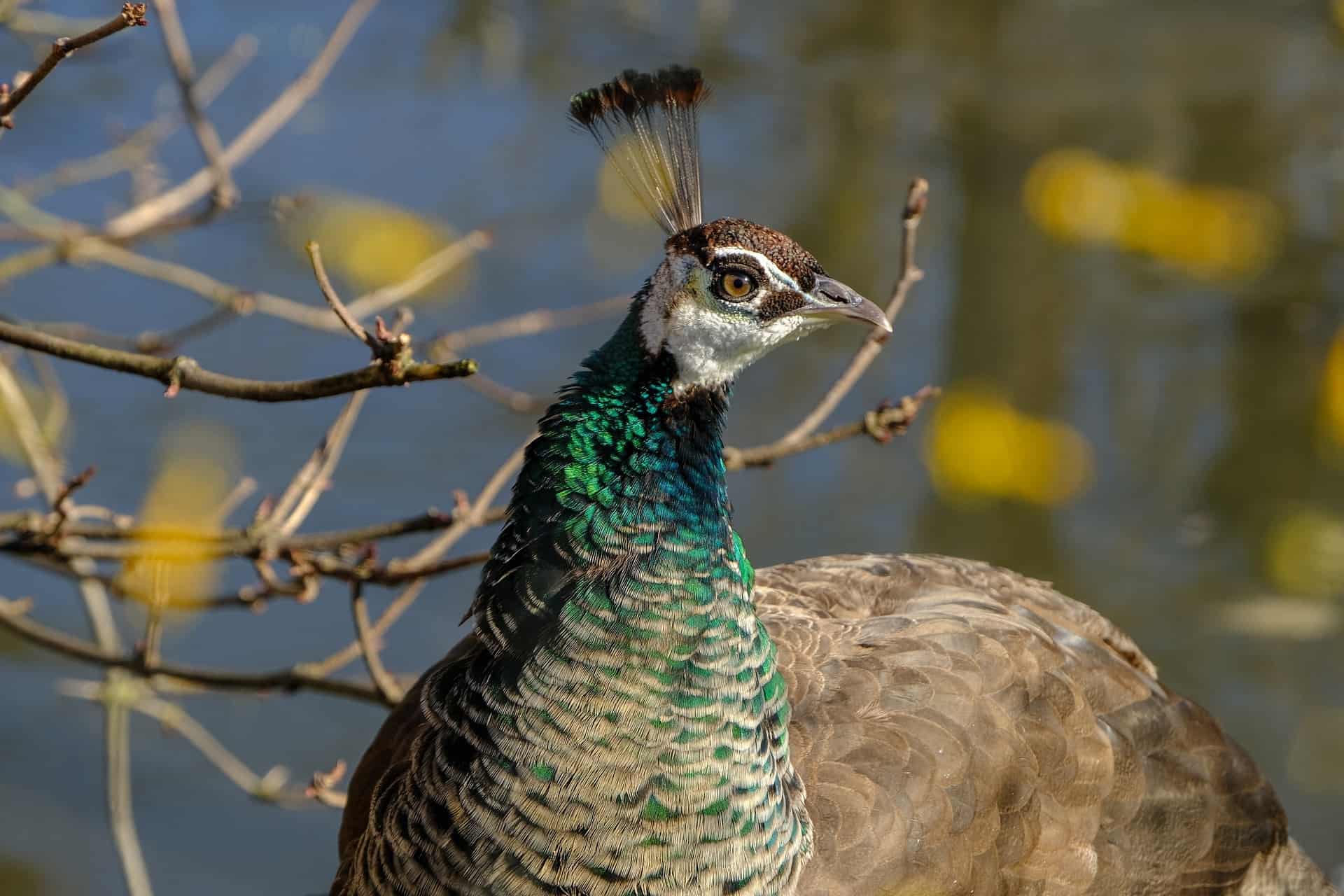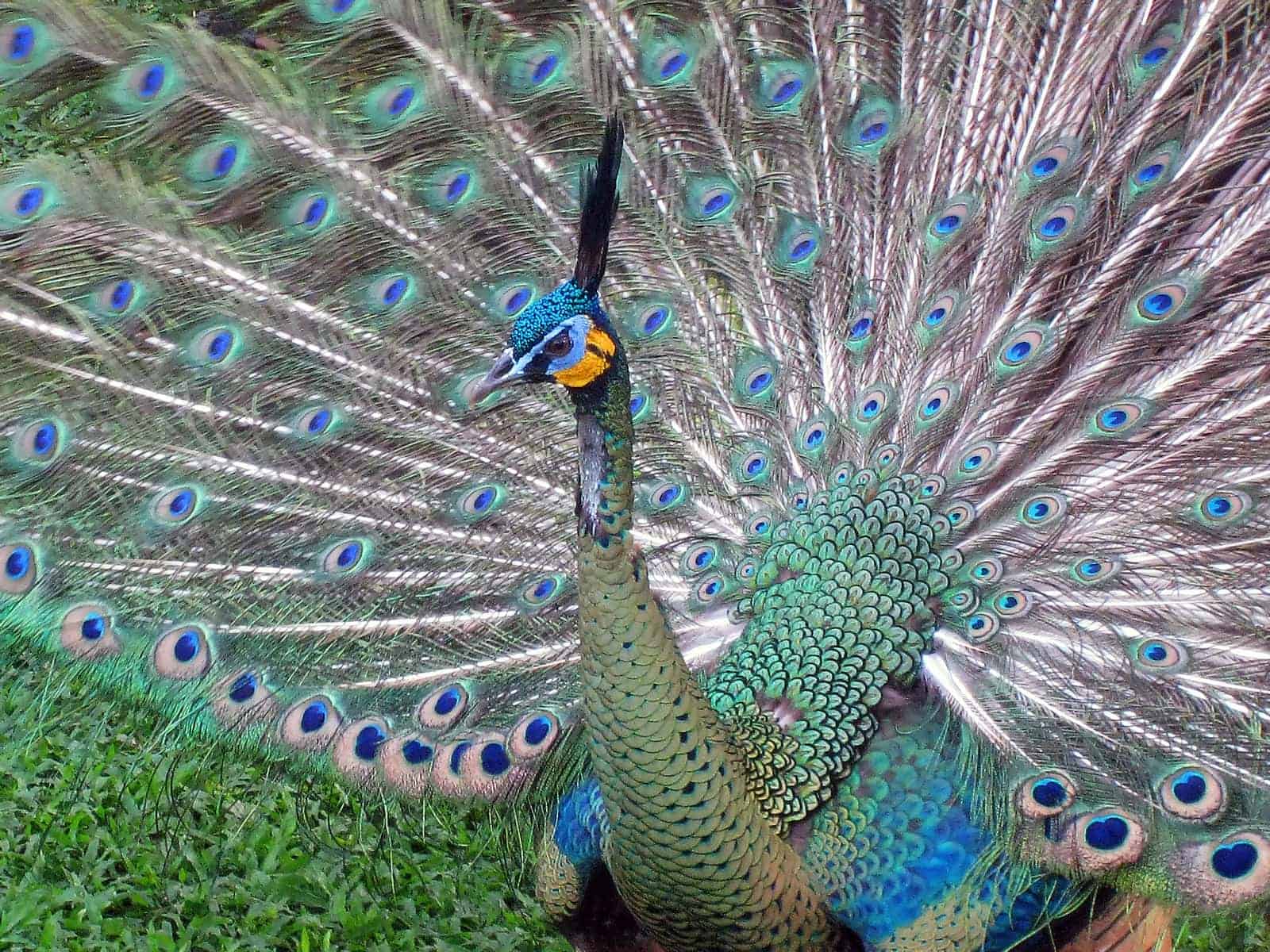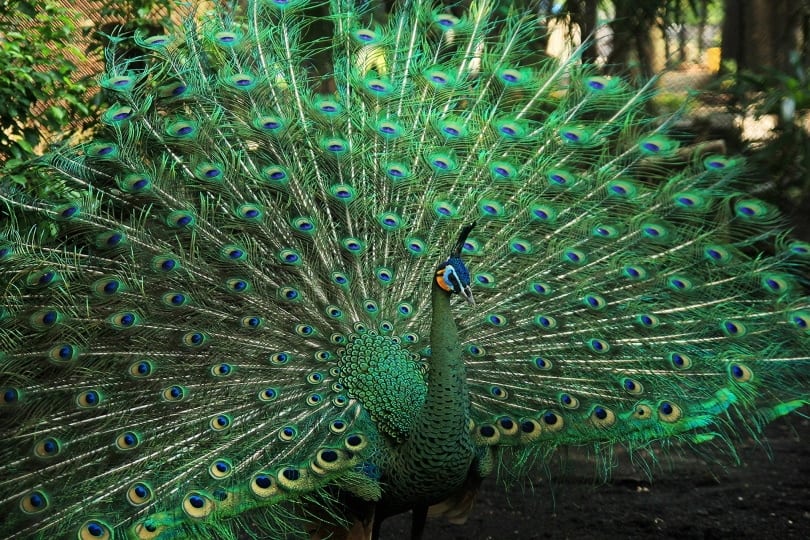The green peafowl is native to the tropical regions of Southeast Asia. They are considered endangered and have been on the IUCN Red List since 2009, as their population is declining rapidly due to habitat loss1.
Unlike other peafowl, both sexes of green peafowl look fairly similar. They both have a long tail that sets them apart from other, similar species.
Their range is quite small today due to habitat fracturing. Current estimates put their population at between 5,000 and 30,000 individuals.
 Quick Facts About the Green Peafowl
Quick Facts About the Green Peafowl

| Breed Name: | Green Peafowl |
| Place of Origin: | Southeast Asia |
| Uses: | Eggs, meat |
| Male Size: | 1.8–3 m |
| Female Size: | 1–1.1 m |
| Color: | Green |
| Lifespan: | 12–14 years |
| Climate Tolerance: | Moderate |
| Care Level: | Low |
| Production: | Eggs |
Green Peafowl Origins
The Green Peafowl is a native bird to Indonesia. They are also called the Indonesian Peafowl for this reason.
These birds live mostly in tropical forests in Southeast Asia. They may have once lived in northeastern India, but the records are unclear. It could be that reports of green peafowl in that area are the result of feral birds, not because the peafowl naturally lives there.
While these birds are largely tropical, they can be found in a wide range of other habitats. For instance, they are known to inhabit forests of all sorts, including savannas and grasslands. Their preferred habitat may vary from place to place, but it is thought to be dry, deciduous forests close to the water and away from people.

Green Peafowl Characteristics
This species lays between three and six eggs. It is thought that they are polygynous, which means that one male mates with several females. Solitary males are territorial and have no pair bonds. They form harems with multiple females instead.
However, there is a bit of confusion regarding this breeding practice. If largely left alone in captivity, birds will sometimes be observed to be strongly monogamous. Some scientists have suggested that groups of birds seen in the wild are juveniles and that males are strictly monogamous.
Usually, these birds spend much of their time on or near the ground in tall grasses. Families roost in trees as high as 50 feet.
These peafowls are opportunistic eaters. They eat various fruits, invertebrates, and reptiles, depending on what they can find at the time. They may even hunt venomous snakes.
Green Peafowl Uses
This peafowl is not typically used for any agricultural purposes. Their endangered status makes them illegal to own in some areas, and they are often considered ornamental.
That said, these birds do have a cultural significance. They were depicted in Japanese paintings from the Endo period, for instance.
The green peafowl is also the symbol of the monarchs in Burma (Myanmar). It was shown on the flag of the governor during British colonial times, and it is also on the country’s currency.
Green Peafowl Appearance and Varieties
Both male and female green peafowl have long tails common among all peafowl. In males, this tail may extend as long as 6 1/2 feet and is usually decorated with eyespots. The female has a much shorter green tail.
Both sexes have iridescent green feathers that resemble scales. In males, the wings have blue on them, while the females have slightly less so. This small coloration difference is often the only way to tell the sexes apart outside of mating season.
Females have neck scales with some copper in them, while males do not.
Both sexes have a shafted crest and are long-legged. The female’s crest has two white stripes and an orange crescent beside their ear.
Both sexes have a dark triangle underneath their eyes. However, this triangle is blue-green in males and brown in females.
The male’s tail molts outside of the breeding season, making the two sexes hard to tell apart. You must observe them up close to notice any differences in coloration.
These birds are known for being quiet. That said, the males of some subspecies are loud and often repeat the same sound over and over again. The female has a different call and uses it less often.

Green Peafowl Population
The green peafowl is considered endangered. Their population is declining rapidly, largely because of hunting and a reduction in habitat. In many regions, this peafowl no longer occurs in many areas where it was once common.
For the most part, national parks and animal sanctuaries are the last strongholds of this species. The population was estimated to be only 5,000 to 10,000 individuals in 1995.
Hybridization isn’t a huge deal because there is not much natural overlap with other peafowl species. However, some captive hybridization has occurred. Breeders have attempted to create hybrids of various kinds using this species.
These birds have been reintroduced in a few places they previously went extinct.
 Are Green Peafowl Good for Small-Scale Farming?
Are Green Peafowl Good for Small-Scale Farming?
This particular species of peafowl isn’t that common. They are rare, which often means they are not available for purchase. They are also illegal to own in some areas due to their endangered status.
Therefore, we don’t recommend this specific bird for farming, though you may want to look at other peafowl types. These birds live to about 12–15 years on average. However, some are reported to live up to 50 years, so if you were to find one legally, you wouldn’t have to purchase new birds often.
Lastly, these birds do produce eggs, which are about three times larger than chicken eggs, but they do taste similar.
Featured Image Credit: endri yana yana, Pixabay
